Reinforcement Learning
ToDo: Daniel, Joao, David, Theo V, Kay, Aryaman, Ahmed, Carlo, Firas
Reinforcement learning (RL) is a powerful machine learning paradigm that enables agents to learn optimal behavior through interactions with an environment. This ability to learn from experience makes RL particularly well-suited for tasks that are difficult or impossible to pre-program, such as playing games, navigating complex environments, and controlling robotic systems. Meanwhile, traditional robotics relies on pre-programmed instructions, limiting adaptability. RL methods can enable robots to learn from experience and adapt to changing environments. Along with using RL for specific tasks like manipulation and locomotion, our research group is at the forefront of RL research, developing new general algorithms and improving techniques that enable agents to learn more efficiently and effectively for various tasks.
Model-Based RL
Diminishing Return of Value Expansion Methods in Model-Based Reinforcement Learning
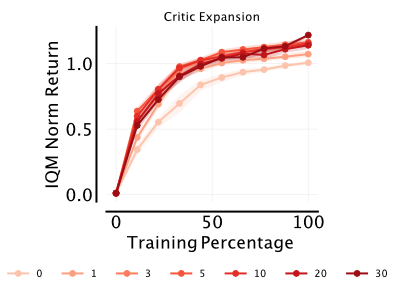
Model-based reinforcement learning is one approach to increase sample efficiency. However, the accuracy of the dynamics model and the resulting compounding error over modelled trajectories are commonly regarded as key limitations. A natural question to ask is: How much more sample efficiency can be gained by improving the learned dynamics models? Our paper empirically answers this question for the class of model-based value expansion methods in continuous control problems. Value expansion methods should benefit from increased model accuracy by enabling longer rollout horizons and better value function approximations. Our empirical study, which leverages oracle dynamics models to avoid compounding model errors, shows that (1) longer horizons increase sample efficiency, but the gain in improvement decreases with each additional expansion step, and (2) the increased model accuracy only marginally increases the sample efficiency compared to learned models with identical horizons. Therefore, longer horizons and increased model accuracy yield diminishing returns in terms of sample efficiency. These improvements in sample efficiency are particularly disappointing when compared to model-free value expansion methods. Even though they introduce no computational overhead, we find their performance to be on-par with model-based value expansion methods. Therefore, we conclude that the limitation of model-based value expansion methods is not the model accuracy of the learned models. While higher model accuracy is beneficial, our experiments show that even a perfect model will not provide an un-rivalled sample efficiency but that the bottleneck lies elsewhere.
-
- Palenicek, D.; Lutter, M.; Carvalho, J.; Peters, J. (2023). Diminishing Return of Value Expansion Methods in Model-Based Reinforcement Learning, International Conference on Learning Representations (ICLR).
-
- Palenicek, D.; Lutter, M., Peters, J. (2022). Revisiting Model-based Value Expansion, Multi-disciplinary Conference on Reinforcement Learning and Decision Making (RLDM).
Policy Gradients
An Empirical Analysis of Measure-Valued Derivatives for Policy Gradients
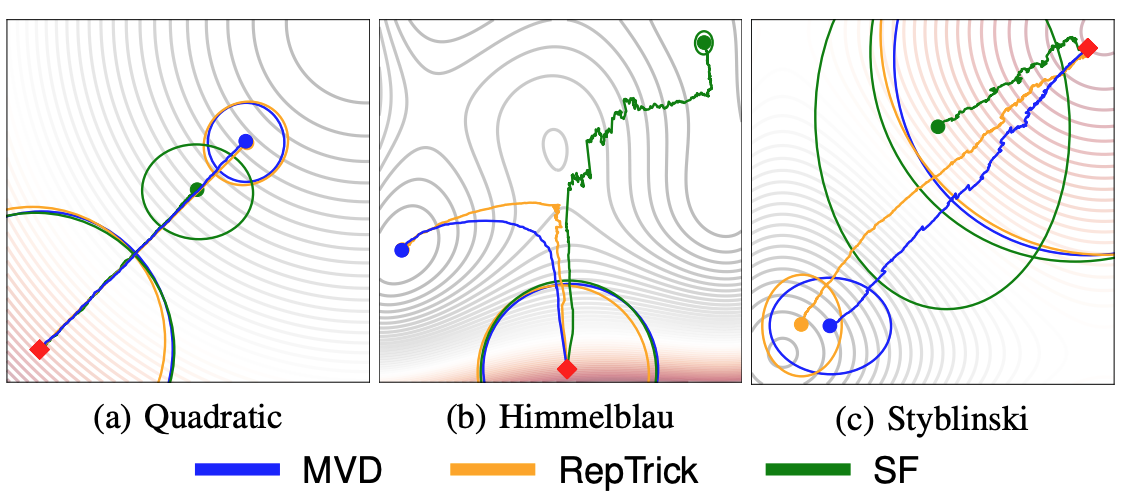
Reinforcement learning methods for robotics are increasingly successful due to the constant development of better policy gradient techniques. A precise (low variance) and accurate (low bias) gradient estimator is crucial to face increasingly complex tasks. Traditional policy gradient algorithms use the likelihood-ratio trick, which is known to produce unbiased but high variance estimates. More modern approaches exploit the reparametrization trick, which gives lower variance gradient estimates but requires differentiable value function approximations. In this work, we study a different type of stochastic gradient estimator: the Measure-Valued Derivative. This estimator is unbiased, has low variance, and can be used with differentiable and non-differentiable function approximators. We empirically evaluate this estimator in the actor-critic policy gradient setting and show that it can reach comparable performance with methods based on the likelihood-ratio or reparametrization tricks, both in low and high-dimensional action spaces.
-
- Carvalho, J., Tateo, D., Muratore, F., Peters, J. (2021). An Empirical Analysis of Measure-Valued Derivatives for Policy Gradients, International Joint Conference on Neural Networks (IJCNN).
Value-Based Methods
CrossQ: Batch Normalisation in Deep Reinforcement Learning for Greater Sample Efficiency and Simplicity
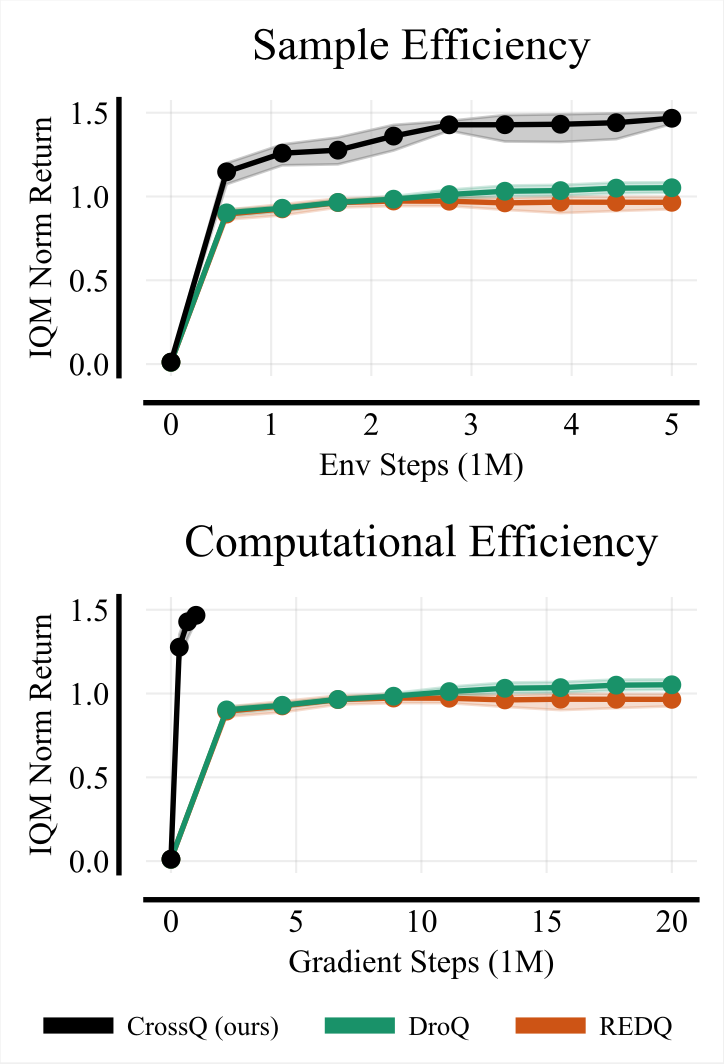
Sample efficiency is a crucial problem in deep reinforcement learning. Recent algorithms, such as REDQ and DroQ, found a way to improve the sample efficiency by increasing the update-to-data (UTD) ratio to 20 gradient update steps on the critic per environment sample. However, this comes at the expense of a greatly increased computational cost. To reduce this computational burden, we introduce CrossQ: a lightweight algorithm that makes careful use of Batch Normalization and removes target networks to surpass the state-of-the-art in sample efficiency while maintaining a low UTD ratio of 1. Notably, CrossQ does not rely on advanced bias-reduction schemes used in current methods.
CrossQ’s contributions are thus threefold:
(1) state-of-the-art sample efficiency,
(2) substantial reduction in computational cost compared to REDQ and DroQ, and
(3) ease of implementation, requiring just a few lines of code on top of SAC.
-
- Bhatt, A.; Palenicek, D.; Belousov, B.; Argus, M.; Amiranashvili, A.; Brox, T.; Peters, J. (2024). CrossQ: Batch Normalization in Deep Reinforcement Learning for Greater Sample Efficiency and Simplicity, International Conference on Learning Representations (ICLR), Spotlight.
Parameterized Projected Bellman Operator
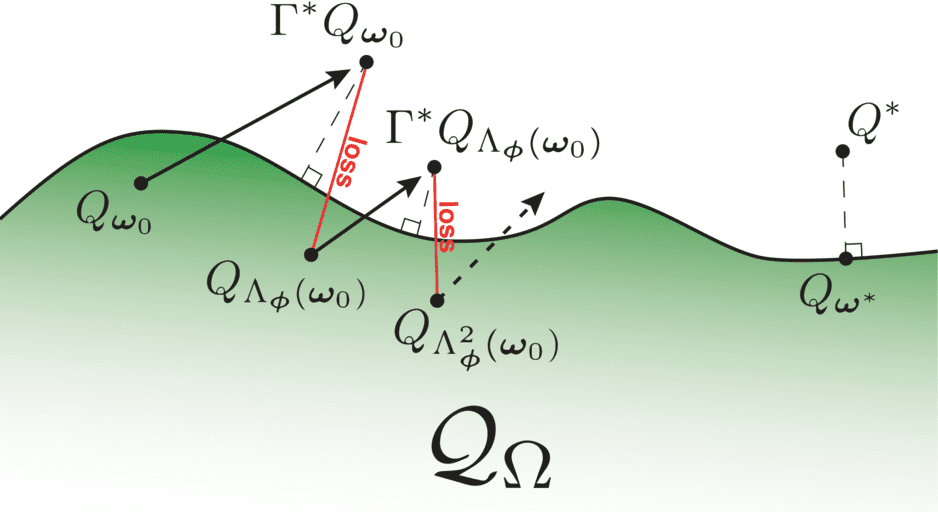
Approximate value iteration (AVI) is a family of algorithms for reinforcement learning (RL) that aims to obtain an approximation of the optimal value function. Generally, AVI algorithms implement an iterated procedure where each step consists of (i) an application of the Bellman operator and (ii) a projection step into a considered function space. Notoriously, the Bellman operator leverages transition samples, which strongly determine its behavior, as uninformative samples can result in negligible updates or long detours, whose detrimental effects are further exacerbated by the computationally intensive projection step. To address these issues, we propose a novel alternative approach based on learning an approximate version of the Bellman operator rather than estimating it through samples as in AVI approaches. This way, we are able to (i) generalize across transition samples and (ii) avoid the computationally intensive projection step. For this reason, we call our novel operator projected Bellman operator (PBO).
-
- Vincent, T.; Metelli, A.; Belousov, B.; Peters, J.; Restelli, M.; D'Eramo, C. (2024). Parameterized Projected Bellman Operator, Proceedings of the National Conference on Artificial Intelligence (AAAI).
- Vincent, T.; Metelli, A.; Peters, J.; Restelli, M.; D'Eramo, C. (2023). Parameterized projected Bellman operator, ICML Workshop on New Frontiers in Learning, Control, and Dynamical Systems.
Robust RL
Robust Adversarial Reinforcement Learning via Bounded Rationality Curricula

Robust Adversarial Reinforcement Learning (RARL) trains a protagonist against destabilizing forces exercised by an adversary in a competitive zero-sum Markov game, whose optimal solution corresponds to a Nash equilibrium, eliciting robustness in the trained agent. However, finding Nash equilibria requires facing complex saddle point optimization problems, which can be prohibitive to solve. In this paper, we propose a novel approach to ease the complexity of the saddle point optimization problem. We show that the solution of this entropy-regularized problem corresponds to a Quantal Response Equilibrium (QRE), a generalization of Nash equilibria that accounts for bounded rationality, and a connection between the entropy-regularized RL objective and QRE enables free modulation of the rationality of the agents by simply tuning the temperature coefficient. We leverage this insight to propose our novel algorithm, Quantal Adversarial RL (QARL), which gradually increases the rationality of the adversary in a curriculum fashion until it is fully rational, easing the complexity of the optimization problem while retaining robustness.
-
- Reddi, A.; Toelle, M.; Peters, J.; Chalvatzaki, G.; D'Eramo, C. (2024). Robust Adversarial Reinforcement Learning via Bounded Rationality Curricula, International Conference on Learning Representations (ICLR).
Robust reinforcement learning: A review of foundations and recent advances
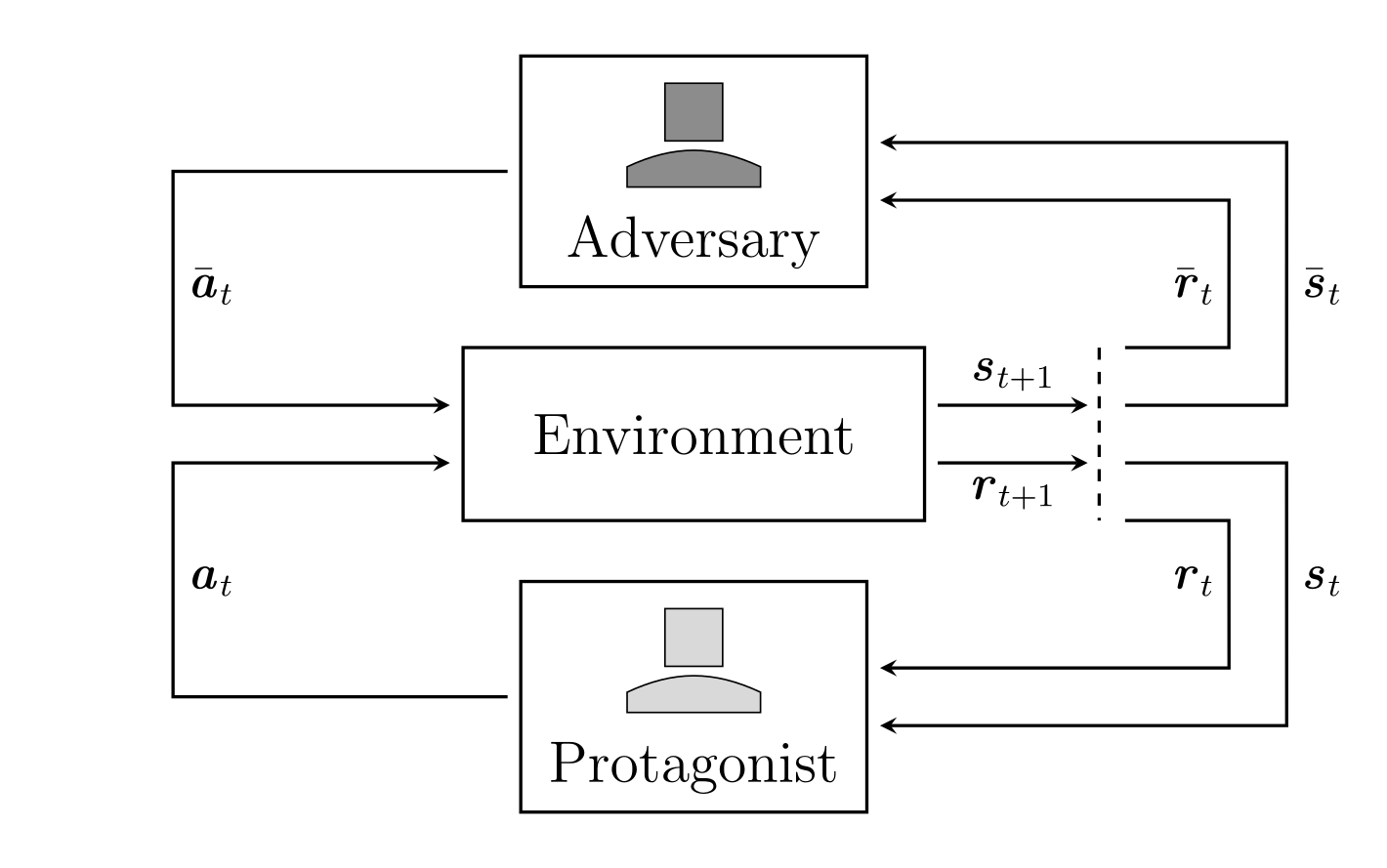
Reinforcement learning (RL) has become a highly successful framework for learning in Markov decision processes (MDP). Due to the adoption of RL in realistic and complex environments, solution robustness becomes an increasingly important aspect of RL deployment. Nevertheless, current RL algorithms struggle with robustness to uncertainty, disturbances, or structural changes in the environment. We survey the literature on robust approaches to reinforcement learning and categorize these methods in four different ways: (i) Transition robust designs account for uncertainties in the system dynamics by manipulating the transition probabilities between states; (ii) Disturbance robust designs leverage external forces to model uncertainty in the system behavior; (iii) Action robust designs redirect transitions of the system by corrupting an agent’s output; (iv) Observation robust designs exploit or distort the perceived system state of the policy. Each of these robust designs alters a different aspect of the MDP. Additionally, we address the connection of robustness to the risk-based and entropy-regularized RL formulations. The resulting survey covers all fundamental concepts underlying the approaches to robust reinforcement learning and their recent advances.
-
- Hansel, K.; Moos, J.; Abdulsamad, H.; Stark, S.; Clever, D.; Peters, J. (2022). Robust Reinforcement Learning: A Review of Foundations and Recent Advances, Machine Learning and Knowledge Extraction (MAKE), 4, 1, pp.276--315, MDPI.
Multi-Agent RL
Disentangling Interaction using Maximum Entropy Reinforcement Learning in Multi-Agent Systems
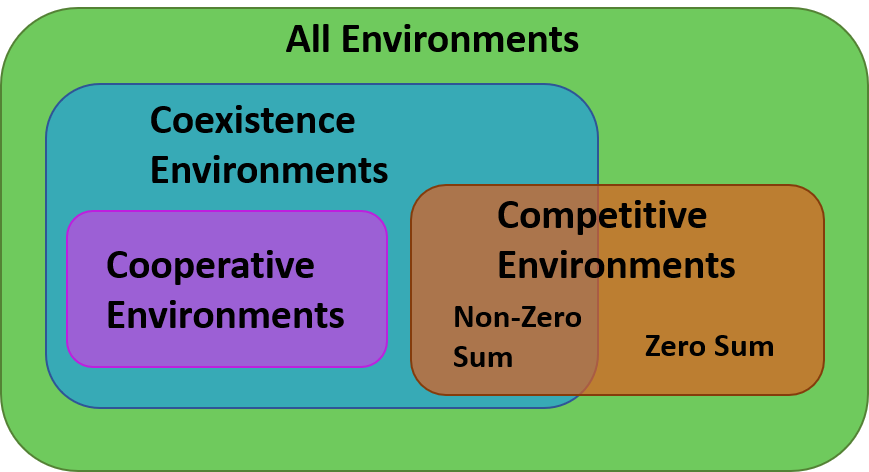
Research on multi-agent interaction involving both multiple artificial agents and humans is still in its infancy. Most recent approaches have focused on environments with collaboration-focused human behavior, or providing only a small, defined set of situations. When deploying robots in human-inhabited environments in the future, it will be unlikely that all interactions fit a predefined model of collaboration, where collaborative behavior is still expected from the robot. Existing approaches are unlikely to effectively create such behaviors in such "coexistence" environments. To tackle this issue, we introduce a novel framework that decomposes interaction and task-solving into separate learning problems and blends the resulting policies at inference time. Policies are learned with maximum entropy reinforcement learning, allowing us to create interaction-impact-aware agents and scale the cost of training agents linearly with the number of agents and available tasks. We propose a weighting function covering the alignment of interaction distributions with the original task. We demonstrate that our framework addresses the scaling problem while solving a given task and considering collaboration opportunities in a co-existence particle environment and a new cooking environment. Our work introduces a new learning paradigm that opens the path to more complex multi-robot, multi-human interactions.
- Rother, D.; Weisswange, T.H.; Peters, J. (2023). Disentangling Interaction using Maximum Entropy Reinforcement Learning in Multi-Agent Systems, European Conference on Artificial Intelligence (ECAI).
Multi-Task RL
Multi-Task Reinforcement Learning with Mixture of Orthogonal Experts

Multi-Task Reinforcement Learning (MTRL) tackles the long-standing problem of endowing agents with skills that generalize across a variety of problems. To this end, sharing representations plays a fundamental role in capturing both unique and common characteristics of the tasks. Tasks may exhibit similarities in terms of skills, objects, or physical properties while leveraging their representations eases the achievement of a universal policy. Nevertheless, the pursuit of learning a shared set of diverse representations is still an open challenge. In this paper, we introduce a novel approach for representation learning in MTRL that encapsulates common structures among the tasks using orthogonal representations to promote diversity. Our method, named Mixture Of Orthogonal Experts (MOORE), leverages a Gram-Schmidt process to shape a shared subspace of representations generated by a mixture of experts. When task-specific information is provided, MOORE generates relevant representations from this shared subspace. We assess the effectiveness of our approach on two MTRL benchmarks, namely MiniGrid and MetaWorld, showing that MOORE surpasses related baselines and establishes a new state-of-the-art result on MetaWorld.
- Hendawy, A.; Peters, J.; D'Eramo, C. (2024). Multi-Task Reinforcement Learning with Mixture of Orthogonal Experts, International Conference on Learning Representations (ICLR).
